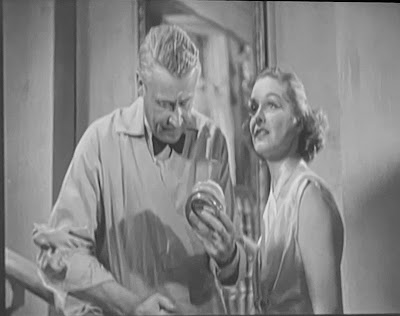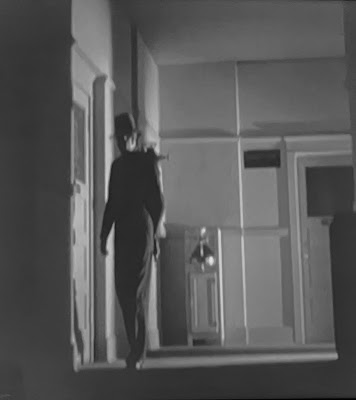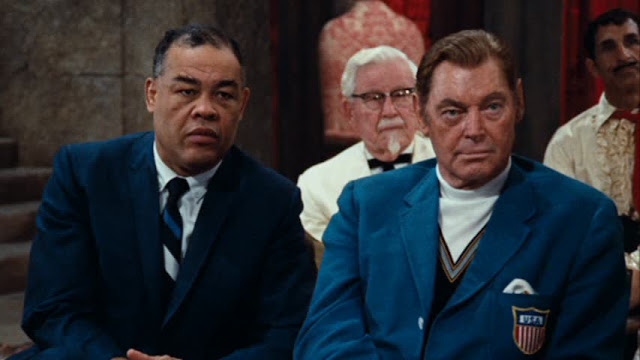You know, you can find some interesting stuff in the advertisements in old newspapers. Even juicy stuff. Case in point: these three ads from 1940 and 1941 issues of the Gadsden Times. My grandmother Rosa Mae Wright saved numerous front pages from that paper during World War II and others for significant events in the 1950s and 1960s. Luckily she did not detach the front page, but kept the sheet attached to it--four pages of the daily paper. Sometimes she kept more. So there are lots of advertisements.
Naturally my attention was riveted by these three ads for movie showings at the Capitol Theatre. In the June 13, 2010, issue of the Times, local historian Mike Goodson published an article about city theaters, "Gadsden Goes to the Movies". He notes that the Capitol opened June 16, 1928, and gives other details about the features and conveniences of this latest addition to the Crescent Amusement Company chain based in Nashville. The first film shown was "The Gray Vulture" with Ken Maynard, one of Hollywood's biggest western stars of the day.
However, we will not be discussing silent western movies in this post. No, these films fall into the exploitation category. The genre has appeared under different guises throughout film history. Such movies in the 1930s through the 1950s were sensationalist but presented themselves as educational. Thus normally taboo topics could be portrayed: unwed mothers, rape, abortion and venereal diseases were common topics.
Thus we come to the specific titles here. "No Greater Sin" was making "Positively the Only City Showing" according to the February 27, 1940 ad. In this one a city health official tries to stem the spread of syphilis in his town. Dr. Edward Cavanaugh is played by Leon Ames, one of several familiar acting faces in this film. Ames' career in films and television lasted from 1931 until 1986. He appeared in well-known movies such as 1946 original version of The Postman Always Rings Twice and served a term as president of the Screen Actors Guild. Other busy character actors here include Luana Walters [numerous film roles, many uncredited], Pamela Blake [lots of western films and serials], Guy Usher [more than 190 films 1932-1943] and Tristram Coffin [films & TV roles 1930s-1970s]. These actors and hundreds of others provided supporting and background roles in Hollywood productions ranging from big budget to exploitation.
Also on that February 27 bill was Nude Ranch, "Direct from World's Fair" and featuring "Nudies, Beauties and Cuties." In smaller print is "Visit Sally Rand's Nude Ranch". The New York City World's Fair had opened in 1939 and ran in 1940 as well. In fact, my dad and his parents went to the Fair in August 1940. Sally Rand was a famous burlesque dancer, stripper and actress who also appeared at the 1933 Chicago World's Fair.
And you could see both of these films for only a quarter!
What Price Passion ran at the Capitol in June 1940. According to its listing in the TCM database it was released in January 1937 as Race Suicide. The cast is also made up of obscure working actors in a tale about the breaking up of an abortion racket, the "Unwarranted Maiming of Unwed Mothers." The best known name is probably Lloyd Ingraham, who in addition to his acting directed numerous silent films. This one also cost a quarter to see, and no one under 16 admitted.
The third ad promotes two films shown in August 1941. "Girls Get Up a Party" in Forbidden Desire showing with Half Way to Hell. Viewers only had to come up with twenty cents to see this pair. I've been unable to track down information on either of these titles. They might be included in Eric Schaefer's "Bold! Daring! Shocking! True!": A History of Exploitation Films, 1919-1959 ]Duke University Press, 1999].
Would you have expected films like these to appear in Gadsden, Alabama, in the early 1940s?
Gadsden Times 27 February 1940
Source: Wikipedia
Gadsden Times 19 June 1940
Gadsden Times 22 August 1941































































